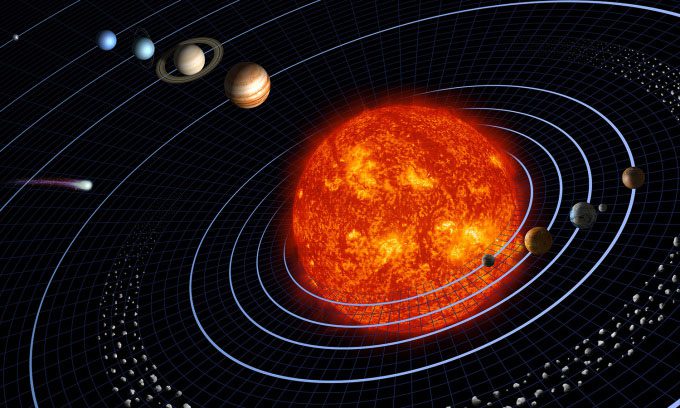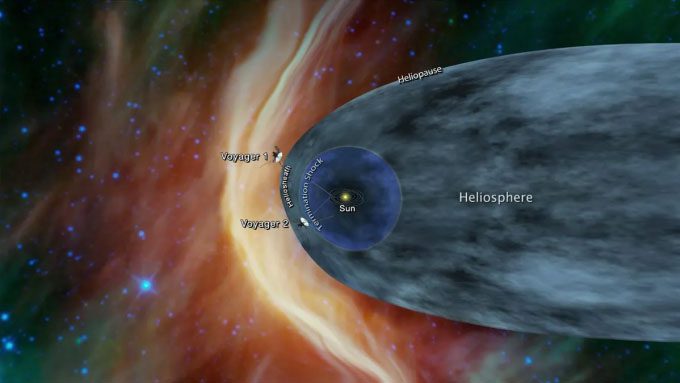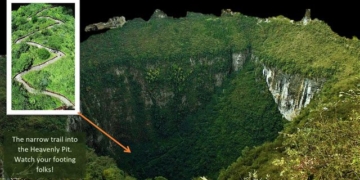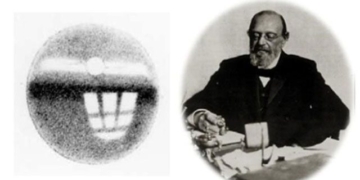Depending on how it’s defined, the boundary of the Solar System could be the Kuiper Belt, the heliopause, or the Oort Cloud.
The Solar System is vast, containing 8 planets, 5 dwarf planets, hundreds of moons, and millions of asteroids and comets. All of these celestial bodies orbit the Sun, often interacting with each other, at speeds of thousands of kilometers per hour. So, where is the edge of the Solar System? The answer depends on how one defines this planetary system.

The Solar System consists of 8 planets. (Image: NASA/JPL)
According to NASA, the Solar System has up to 3 potential boundaries: the Kuiper Belt (a belt of rocky objects beyond the orbit of Neptune), the heliopause (the edge of the Sun’s magnetic influence), and the Oort Cloud (a distant region containing comets, nearly impossible to observe from Earth).
The Kuiper Belt
The Kuiper Belt extends from 30 to 50 astronomical units (AU) from the Sun (1 AU is the distance from the Earth to the Sun). This area is filled with asteroids and dwarf planets, such as Pluto, which has been pushed out from the inner regions of the Solar System due to gravitational interactions with the planets.
Some astronomers argue that the Kuiper Belt should be considered the edge of the Solar System because it represents what would have been the outer edge of the Sun’s protoplanetary disk. The protoplanetary disk is a ring of gas and dust that eventually formed into planets, moons, and asteroids.
“If defined narrowly as just the Sun and its planets, then the edge of the Kuiper Belt could be considered the edge of the Solar System,” says Dan Reisenfeld, a researcher at the Los Alamos National Laboratory in New Mexico, USA.

The Kuiper Belt is filled with asteroids surrounding the Solar System. (Image: BBC).
However, some astronomers view this definition as overly simplistic. “That’s not really accurate. Everything has shifted a lot—mostly outward—since the planets formed,” explains expert Mike Brown from the California Institute of Technology (Caltech).
Accordingly, the Kuiper Belt does not contain everything in the Solar System. In October 2023, the discovery of numerous new objects beyond the Kuiper Belt suggested that there might be a “second Kuiper Belt” even farther out. Some researchers argue that the uncertainty about the outer edge of this region makes it an unreliable boundary for the Solar System.
Heliopause
The heliopause is the outer edge of the heliosphere – the region influenced by the Sun’s magnetic field. At the heliopause, the solar wind, or stream of charged particles emitted by the Sun, becomes too weak to fend off the incoming cosmic radiation from other stars and entities in the Milky Way.
“Since the plasma inside the heliopause originates from the Sun and the plasma outside the heliopause comes from interstellar space, some people consider the heliopause to be the boundary of the Solar System,” Reisenfeld says. The space beyond the heliopause is often referred to as “interstellar space” (the region between stars).
Two spacecraft have crossed the heliopause: Voyager 1 in 2012 and Voyager 2 in 2018. Upon venturing beyond the heliopause, the Voyager spacecraft quickly detected changes in magnetic type and intensity, as well as radiation heading toward them. Brown states that this indicates they have crossed a certain type of boundary.
However, the heliosphere is not spherical but resembles a teardrop shape. Therefore, using the heliopause to define the Solar System would create a distorted system, contradicting the views of some researchers regarding the planetary system.

Simulation of Voyager 1 and Voyager 2 traveling in space. (Image: NASA/JPL-Caltech).
The Oort Cloud
According to NASA, the Oort Cloud is the farthest and widest potential boundary of the Solar System, extending to about 100,000 AU from this star. “Those who define the Solar System as everything bound by gravity to the Sun consider the edge of the Oort Cloud to be the edge of the Solar System,” Reisenfeld explains.
For some researchers, this is the ideal choice for the boundary of the Solar System because theoretically, a planetary system includes all objects orbiting a star. However, other researchers argue that since the Oort Cloud is located in interstellar space, it lies outside the Solar System, even if bound to the Sun. Additionally, scientists are unsure about the actual endpoint of the Oort Cloud, making it a less reliable boundary than the Kuiper Belt.
Most Commonly Accepted Boundary
Among the 3 potential boundaries, the heliopause is the one most frequently used by researchers and NASA to define the Solar System. The reason is that this location is the easiest to identify and the magnetic characteristics on either side differ significantly.
However, this does not mean that everything beyond the heliopause must be interstellar objects; for example, the giant space rock ‘Oumuamua, according to Reisenfeld. “The Oort Cloud is also part of the material that formed the planets. Therefore, it contains material from the Solar System, not interstellar material,” he states.




















































